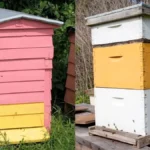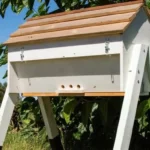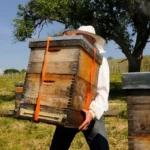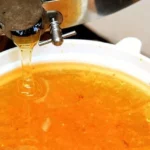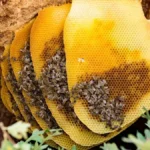As a beekeeper new to this fantastic hobby, one of the main decisions you will have to take in the beginning is regarding the beehive. Ask any beekeeper, and chances are you will get different opinions about each type of hive. This indicates that no single beehive design is perfect for everyone.
As your hive grows, you might even consider upgrading to another beehive style to suit your colony’s growing needs.
In this guide, we cover five popular beehive styles and their strengths and weaknesses. If you are trying to understand how many hives you can keep, then check out our other articles about How many hives one person can manage.
What Are The Most Popular Beehives Used By Beekeepers Today?
One of the oldest and most popular beehive styles is the Langstroth hive. These days, many beekeepers have switched to the modern Flow Hives which overcome many of the drawbacks of Langstroth hive. The BS National Hive is the most popular hive among British beekeepers. In the United States, most beekeepers prefer the Langstroth Hive while in Australia, many have switched from Langstroth to Flow Hives.
Different Types of Beehives With Pros and Cons
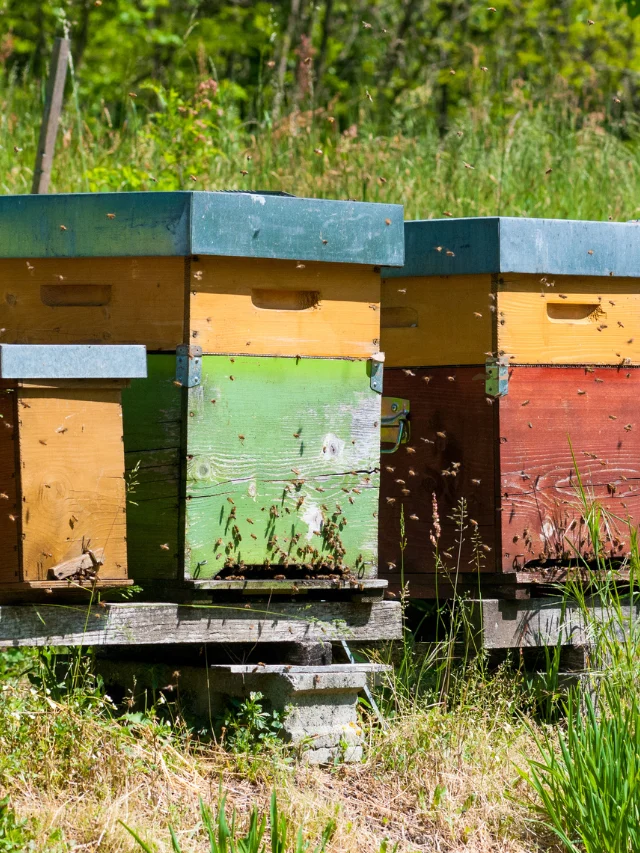
Langstroth Hive: The Easy Beehive for Beginners
Langstroth Hive can be considered the traditional or classic beehive which has inspired many modern hive styles. It is by far the most popular beehive commonly used by beekeepers around the world. Rev. Lorenzo Langstroth invented it in 1851.
The hive allows beekeepers to lift, remove, and reinsert frames. The beekeeping industry has also developed various accessories designed to fit the Langstroth hive. Since manufacturers use standard measurements based on the Langstroth Hive’s original design, it is easy to upgrade and replace parts of this hive. Thus, you can purchase a honey super from a fellow beekeeper and if you both use Langstroth, the supers will fit perfectly. These hives are very well priced given their popularity and you can always find (or make) your own parts for them. Check the Online Pricing of a Traditional Langstroth Hive If you have the budget however, an Insulated Langstroth Hive can certainly save you some problems (and extra equipment) during winter time. Check the Online Pricing of an Insulated Langstroth Hive
Pros
- Beginners find this hive easy to assemble and work
- Parts are easy to remove for inspection
- Supported by a host of add-ons including queen excluders, feeders, hive stands, etc.
- Honey supers can be easily removed and harvested
- Can be easily supported on various hive stands including homemade stands, cinder blocks, etc.
Cons
- Each comb is highly restrictive which makes it confining for the bees
- Comb sizes can only be as long or as wide as the frame allows
- The weight of brood nest and honey supers can be extremely heavy- 30 to 80 lbs.
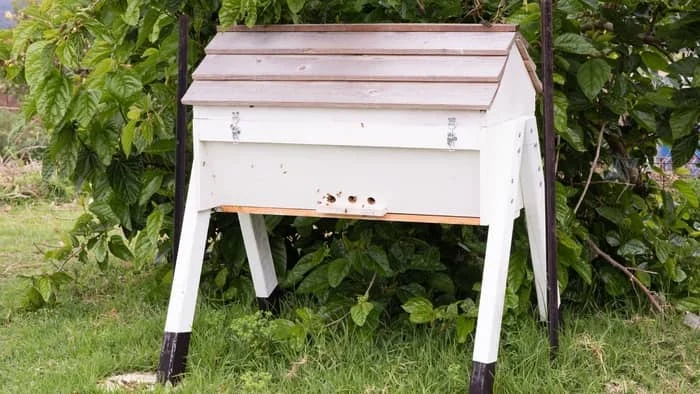
Top Bar Hive: A Horizontal Bee Hive Alternative
This is an all-horizontal hive that brought a ‘breath of fresh air’ into the world of beekeeping. Not only do beekeepers enjoy building it; but it allows the bees to build a natural comb. Beekeepers also appreciate its waist-high design that eliminates heavy lifting and requires simple manipulation.
Unlike Langstroth hives, Top Bar hives do not follow standard measurements and can be constructed to personal taste. The top bars are made of sloping, angled sides with flat end walls.
Pros
- Easy working and inspection; the top bars remain in place during the inspection and hold the bees down
- Bee colonies benefit from being able to build a natural comb (hanging it from top bars)
- The honeycomb can be cut from the top bars and crushed and strained. No extractor is needed
- Provides a less-expensive approach to starting a hive
Cons
- Since honeycombs are destroyed, the bees have to start over completely which is time and energy consuming
- Less honey production as you cannot add honey supers
- The horizontal bee hives design makes it difficult to exclude the queen from the honey super combs
- You need special manipulation when medicating a colony
- Has a larger footprint in case you have space limitations
- Overwintering is complex.
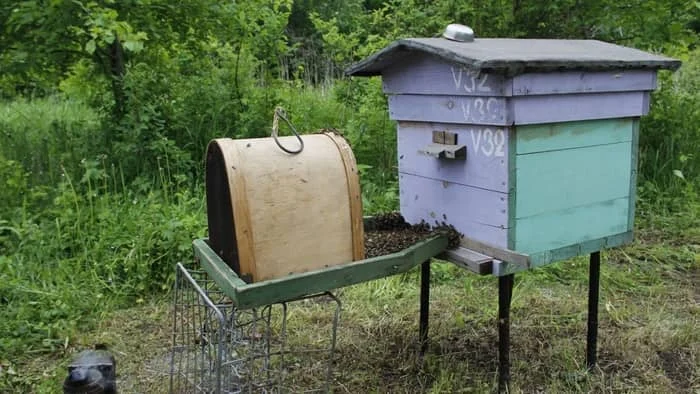
Warre Hive (People’s Hive): A Natural Beekeepers Hive Choice
After experimenting with over 350 designs, Abbe Emile Warre designed the Warre Hive in the early 1950s. The Warre hive can be considered a mix of Langstroth and Top Bar Hives. Warre hive mimics a tree hollow which is a favored location of wild bees.
The boxes in Warre are slightly smaller than those in the Langstroth hive. Most frames are top bars although some have sidebars to guide the bees in making the honeycomb.
Warre hives also come with a quilt box on the top usually filled with sawdust or other insulating material. This insulated beehive is comfortable for the bees all year round despite the weather. You can find out how to build one using one of the best manuals available online by David Heaf. In his book, he outlines the simple methods to building and managing Warre Hives with a focus on Natural Beekeeping. Find Natural Beekeeping with the Warre Hive online here including pricing for it.
Pros
- Easy to build and easy to manage
- Promotes natural beekeeping approach
- Increased ventilation and superior moisture control
- Allows you to add boxes at the bottom which prevents disturbance to the hive and helps maintain constant pheromone control
- Honey can be harvested without an extractor
Cons
- Heavy to lift
- No observation window
- Less common, so replacement parts can be difficult to obtain
- Since there is no foundation, the combs tend to be fragile.
- Lower honey yield.
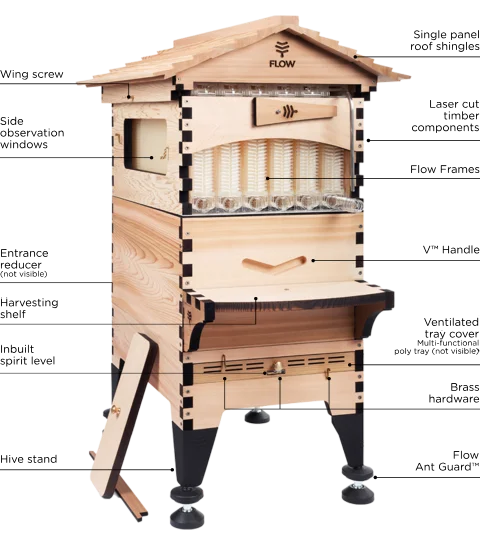
Flow Hive: Effortless Honey Harvesting with Modern Beehive Design
Flow Hive is an award-winning beehive that has revolutionized the way beekeepers harvest honey. It is like honey on tap as it lets you collect honey without opening the hive or destroying the comb. Flow Hive was created by father-son beekeepers from Australia- Stuart and Cedar Anderson. They patented their technology which lets you harvest pure, unprocessed honey straight into your jar.
The Flow Hive is always updating their design and the latest Flow Hive 2+ is no exception. Built from western red cedar, the beekeeper can harvest up to 21kg of honey when the super is full and without the mess (or cost) of a Honey Frame Extractor. The Flow Hive is definitely the pricey hive, but well loved by beekeepers everywhere. Check out the pricing and features for yourself here online for the Flow Hive 2+
Pros
- Bee-friendly practices; does not harm bees
- Provides incredible-tasting honey in small batches
- Easy harvesting; prevents heavy lifting and hot, sticky work
- Works in all climates
- Attractive, colorful, and space-saving design for a garden set-up
- Sustainably made with high-quality wood
Cons
- Expensive to set up
- Uses plastic frames
- The wood tends to warp and dry out in hot weather.
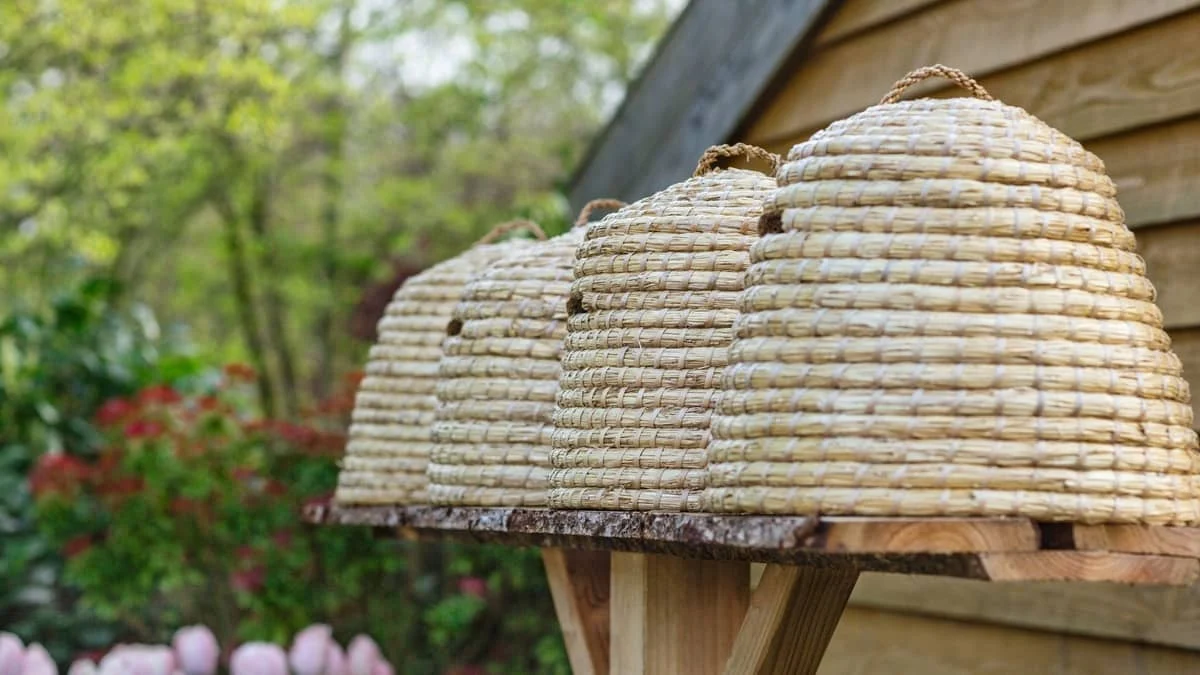
Bee Skep: A Traditional Bee Hive with limited use
A bee skep is a traditional, basket-shaped, coiled-straw hive used by Saxon beekeepers to collect honey during early Christian times. Today, a few beekeepers still use it to collect swarms but it has mostly been discontinued because of its impractical design that harms bees. It may also be illegal to use a bee skep in your area, so you should find out more information before buying one. While we don’t recommend that you use them, you can still buy bee skeps which are more used now for decoration than anything practical to beekeeping. Find a Bee Skep Online Pricing here.
Pros
- Allows bees to swarm which is natural bee behavior and which some beekeepers prefer
- Made of natural, breathable, and sustainable materials
- Does not require inspections
Cons
- Small and un-expandable
- You need to destroy the colony to collect the honey
- Many nations have banned its use.
So Which Beehive Is Right for You?
If you are new to beekeeping, you may want to study various hive styles before investing or building the best beehive. New beekeepers often compare the Langstroth hive vs Warre Hives which trade off being cost-effective against being difficult to work. Flow hives are convenient and easy to harvest honey but tend to be expensive. Warre hive and Top Bar hive are also great for those looking for a more natural approach to beekeeping.
Start small and keep learning as you progress. This site has many great tips and resources so do check them out.

Beehive Types FAQs
What is the most popular type of beehive?
The Langstroth hive is the most popular type of beehive worldwide due to its ease of use, modular design, and compatibility with numerous beekeeping accessories.
What are the advantages of using a Langstroth hive?
Langstroth hives are beginner-friendly, easy to inspect, and supported by a wide range of accessories. They also make honey harvesting straightforward.
What are the disadvantages of a Langstroth hive?
Langstroth hives can be heavy to lift, and their restrictive comb size might limit bee movement. Additionally, assembling and managing them can require more effort.
Why do some beekeepers prefer Top Bar hives?
Top Bar hives allow bees to build natural combs, are easier to inspect without heavy lifting, and provide a cost-effective option for beginners.
What are the downsides of Top Bar hives?
Top Bar hives produce less honey, are more complex to manage during winter, and require bees to rebuild comb after each harvest.
What makes the Warre hive unique?
The Warre hive mimics a natural tree hollow, providing insulation and comfort for bees. It also allows for minimal disturbance during honey harvesting.
What are the limitations of the Warre hive?
Warre hives are heavy to lift, lack observation windows, and have fragile combs that can be challenging to handle. Replacement parts can also be hard to find.
How does a Flow Hive simplify honey harvesting?
Flow Hives let beekeepers harvest honey directly into jars without opening the hive or damaging the comb, making the process easier and less disruptive for bees.
Are there any drawbacks to using a Flow Hive?
Flow Hives are expensive to set up, use plastic frames, and their wood can warp in hot climates, which may require additional maintenance.
How many Beehives can I look after?
If you are looking to setup a few beehives, then there are several important factors that will limit how many you can attend to. We have outlined this clearly in our other article: How many hives can one person manage if you want to take a look and find out.

Sam Fielding is an apiary student at The Ohio State University with a strong passion for beekeeping and honey production. Dedicated to advancing the resilience of bees, Sam is actively involved in establishing bee colonies in the lower regions of the United States, including Texas and Florida, as part of a volunteer program. His hands-on experience in these diverse climates has given him a unique perspective on bee health and hive management.
Sam’s dedication to both the scientific and ethical aspects of beekeeping makes him a valuable voice in the apiculture community, advocating for both bee health and consumer rights. He also helps us maintain our facebook page, so feel free to get in touch with him there!

